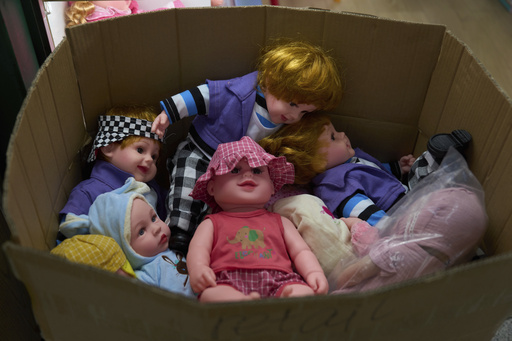In a renewed focus on international trade policies, President Donald Trump has turned the spotlight on various foreign goods through the lens of tariffs, ranging from European wines to Mexican automobile components, and now, even extending to toy dolls. Recently, he suggested that children might have to be content with fewer dolls—perhaps two or three instead of 30—should rising U.S. import taxes drive consumer prices higher. This comment sparked reactions across social media, where memes compared Trump to the Grinch, and images circulated of Barron Trump with a child’s Mercedes convertible.
Jonathan Cathey, CEO of collectible toy company The Loyal Subjects in Los Angeles, expressed his frustration over the president’s remarks, labeling them as detached from reality. He criticized the notion that dolls and toys have been caught up as symbols in this muddled trade war. Cathey’s sentiments resonated with many parents who voiced their concerns over perceived trivialization of potential price hikes and the acknowledgment of prevalent toy abundance among children.
As these discussions continue, the U.S. toy industry remains heavily dependent on Chinese imports, which account for nearly 80% of toys sold in the country. With tariffs looming at a steep rate of 145%, notable trade groups like The Toy Association have been advocating for relief, arguing that the extended imposition could result in holiday shortages.
Industry statistics underscore the significance of the U.S. doll market. Despite popular brands like Barbie and Cabbage Patch Kids, overall sales have remained flat due to economic pressures and shifting interests among children towards makeup and skincare. In light of the tariff situation, prominent toy manufacturers, such as Mattel, have begun raising prices to mitigate these additional costs while accelerating efforts to diversify their manufacturing footprint beyond China.
Smaller firms face a tougher road ahead. Cathey had to halt shipments from China earlier this year, as the crippling tariffs were financially unsustainable. He emphasized the urgency for a resolution within the trade conflict, highlighting the challenges in obtaining inventory before the holiday season.
Smaller companies like Cepia, known for Zhu Zhu Pets, are also grappling with the changes. While they are exploring new production avenues, the shift might not come quick enough to replace this year’s orders originating from China. CEO James Russell Hornsby, despite being a Trump supporter, called for an expedited resolution to these trade disruptions.
The intricate process of doll-making has traditionally benefited from Chinese expertise, a factor not easily replicated in the U.S. The crafting involves skills gained over years of practice, such as expertly rooting synthetic hair and detailed painting—tasks Hornsby argues require specialization, not automation.
Questions around the safety of Chinese-made toys occasionally surface, pointing to past concerns over lead content. However, regulatory requirements in the U.S. involving strict third-party testing mitigate these risks, assuring compliance from major brands like Mattel and Hasbro. Despite this, the rise of e-commerce and untracked imports poses significant challenges in maintaining oversight, although recent policy changes aim to tighten control over such shipments.
The discussion around consumerism and the sheer volume of toys available in American households continues to spark debate. Some agree that excessive consumption results from keeping prices low, powered by the affordable labor in foreign factories. Parents like Katie Walley-Wiegert appreciate consumer choices despite recognizing materialism issues, finding Trump’s comments dismissive of everyday realities. Meanwhile, Elenor Mak, founder of a doll company aimed at representing Asian Americans, voiced concern over the potential impact of the trade conflict on families struggling to afford these simple joys for their children.



